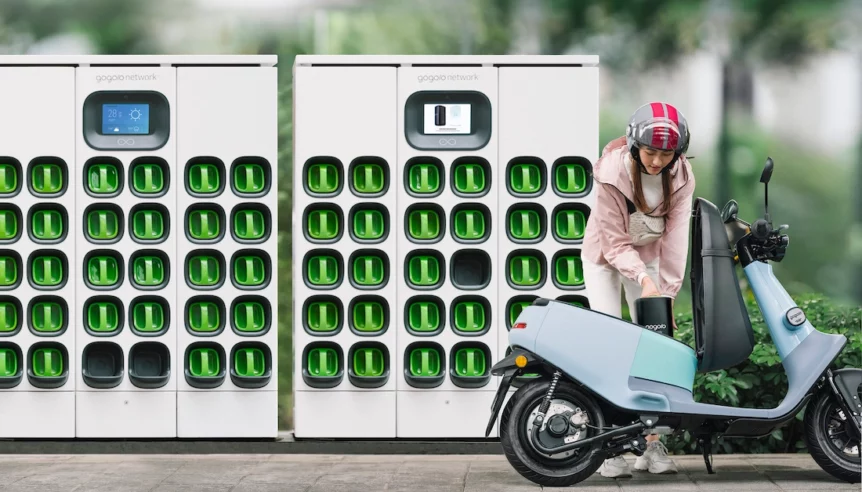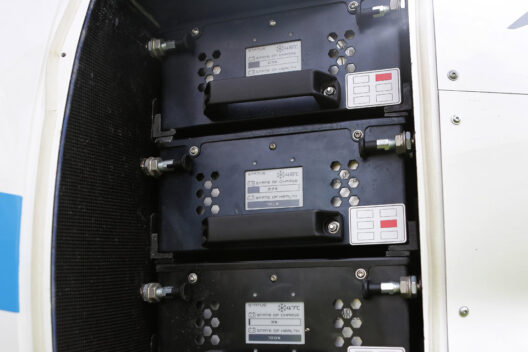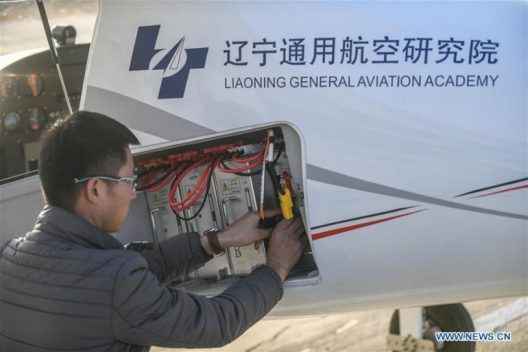Gogoro, a Taiwan-based scooter and battery system, has added solid state chemistry to its swappable batteries. This increases the stored energy in each 9 kilogram (19.8 pound) pack from 1.7 kilowatt-hours of the current liquid electrolyte to 2.5 kWhr. These packs are light enough for a small woman to handle, as shown in Gogoro’s promotional videos.
Growing GoStations
Swapping batteries on Gogoro’s own scooters is quick and convenient, with over “10,000 battery-swapping GoStations at over 2,300 locations,” by the firm’s own count. They serve over 450,000 riders with over 340,000 daily swaps. Powering 95-percent of all electric two-wheel scooters on the island nation, they’ve “hosted” more than 260,000,000 total battery swaps to date. Gogoro boasts their “Network subscribers have swapped over 140 million Smart Batteries without incident since 2015.”

Taiwan hosts 10,000 Gogoro GoStations at 2,300 locations in a country of 23.6 million. There are an estimated 14 million scooters, with about 450,000 of them electric. Human and planetary health requires replacing the smoggy two-stroke machines with electric counterparts
The number of GoStations is close to exceeding the number of gas stations on Taiwan.
A joint development between Gogoro and Prologium, the new solid-state batteries fit the existing modules in existing Gogoro scooters and others that have adopted the smart battery pack. These include Yamaha, AMotor, eMoving, ePeady, Haojue, Hero, PGO, Awayspeed, two Chinese scooter manufacturers – Yadea and DJY – and planned alliances with Indonesian scooter makers.
With over 300 million Chinese riders and huge numbers throughout Asia, GoStations could become a common site across the continent.
Engadget reports, “The scooters come at a good time in China, which enacted legislation to retire up to 250 million gas- and diesel-powered vehicles by 2025. The launch could also act as a test of Gogoro’s battery swapping tech for future expansions around the world.”
Gogoro may be making good on Dean Kamen’s reputed ambition to replace the nasty little two-stroke scooters endemic in Asian countries with clean, non-polluting personal transport. But what was a humanitarian dream turned out to be a source of ridicule – the Segway. Electric scooters seem to me a more immediately recognized and desired commodity. Gogoro scooters seem to be significantly less expensive, too.
More Energy Dense Batteries
The new solid state batteries will be backwardly compatible, meaning they can be used in older Gogoro scooters without any changes – and in all the new vehicles made by other manufacturers using GoStation swaps. Made possible by the Gogoro Network, batteries are updated to the latest software release every time they are swapped. The Network also keeps track of the flow of battery use around the island of Taiwan – a compact space, but one inhabited by millions, with lots of trips to make.
In prototype form now, the batteries should be commercially available by 2025 or 2026. The lithium ceramic batteries (LCB) have about 263 Watt-hours per kilogram, according to one source. That’s roughly equivalent to a Tesla pack.
The video contains premises and conclusions that are those of “The Electric Viking,” although they seem mostly reasonable.
Each smart battery pack helps maintain tracking and use data in the Internet cloud, and helps Gogoro plan where to place new GoStations and allocate distribution of batteries and swapping ports. The scooters themselves can be updated through the battery swaps, with new programming updating the scooter’s capabilities. Users can also use a smart phone to update their scooters, enabling constant improvement of their capabilities. This is similar to Tesla’s over-the-air updates, which require a strong Wi-Fi signal.
Aircraft Using Swappable Batteries
Pipistrel’s Alpha Electro and Taurus Electro have removable battery packs which can be charged in or out of the aircraft. For flight training operations, having extra battery packs allows quick exchanges and little interruption between the time students return an airplane and when it can return to flight. Alphas carry six small battery packs and the Taurus carries two. They are totally different in size and power. The Pipistrel Velis has a pair of larger, non-removable batteries wired and plumbed into a common system with the motor and controller.
A Chinese craft, the RX1, has battery system similar to the Pipistrel Alpha Electro, with six removable battery packs. FES, Front Electric Sustainer, uses a pair of removable battery packs usually mounted behind the cockpit of the sailplane in which they are mounted.
All these systems have their own proprietary battery management systems (BMS), chargers, and instrumentation. Currently there is no standardization, other than perhaps the plugs used in recharging stations. Would Gogoro’s example provide a model for a standardized system of batteries, updates, and charging for the aircraft world? Will the 40-percent improvement in energy density apply to aircraft batteries using lithium ceramics? Gogoro’s development is seen as a game changer for electric scooters. Could it be for electric flight as well?




Comments 1
Very interesting article – thank you Dean!
Solid state battery seems to be promissing evolution.
If is already used for public transport than it means that we will be able to buy in short future cells with this technology.
Normally I would say that “swapping” stations on airfields could be suitable solution also for sport aviation. For small one seat flying mashine (light self launch glider, electric trike…) would be enough to use 2-3 “scooter batteries” with 5-7,5 kWh capacity. The only question is battery history (or battery condition). In small scooter is not a big problem if capacity is 80% or even lower. In airplane could be signifficantelly lower capacity safety problem.
In any case – future of electric aviation looks better again 🙂
Best regards!
Martin